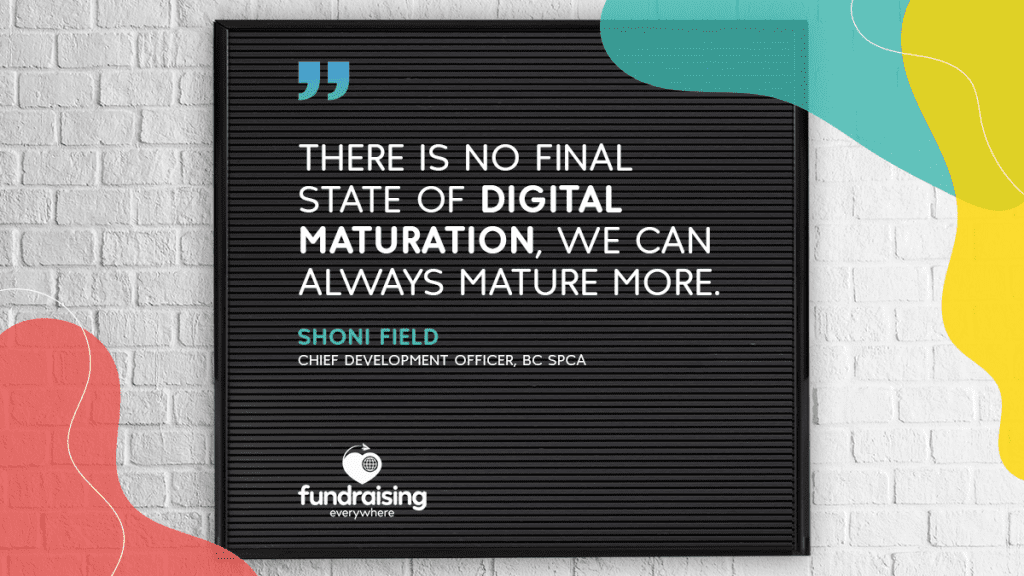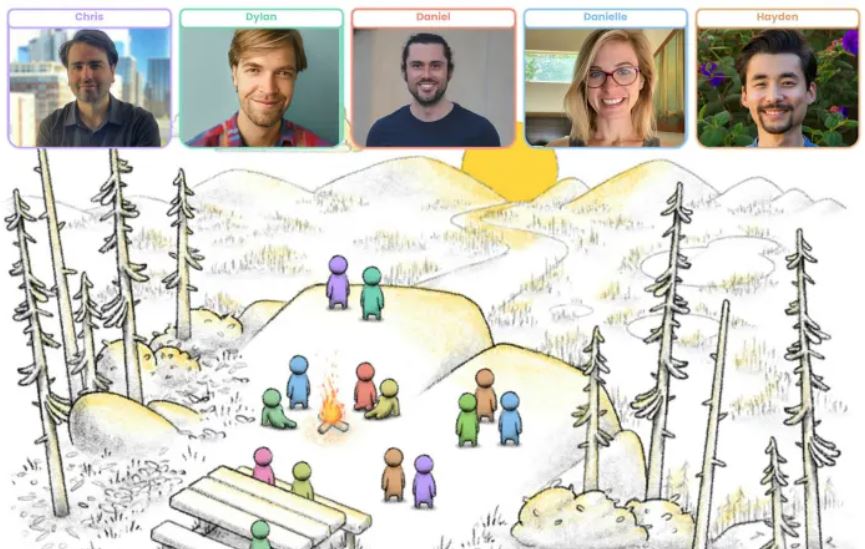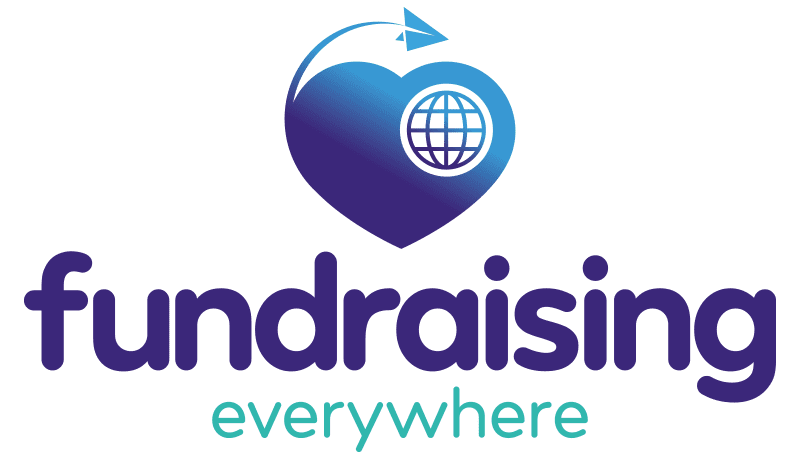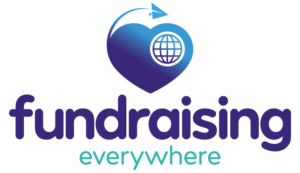
January's guest blogger is Elizabeth Archer (known as Ed). Ed has held strategic roles at Mencap, Ambitious about Autism, Contact and is currently Head of Services & Service design at Toynbee Hall. She specializes in designing systems and structures that serve communities in the way they want and need. This has included supporting people experiencing structural inequality to influence local and national policy, supporting organisations to improve the way they listen to and work alongside the people they serve and finding ways to build fairness and transfer of power into our everyday ways of working.
Recently I feel like every conversation about recruitment is the same. The accepted knowledge is that at the moment it's really hard to find great people to work in the charitable sector. A question often posed is, 'in the midst of the great resignation when people are searching for meaningful jobs, why aren't people applying for this great role in my team?'
At Toynbee Hall our whole mission is to make London a fairer and happier place, and so when we were looking to answer this question we asked, is this about fairness? Is the sector struggling because while we think we’re offering up roles to everyone we’re accidentally shutting a lot of people out?
Our HR team has long championed removing emotive (and ableist) words like energetic as well as irrelevant qualifications from our job descriptions. And over the last year with their support our services, research and policy teams have gone further. We’ve collaborated and experimented with loads of ways to encourage applications from a broader range of talented people. Some innovations (community panel workshops, paid interview time) are still at testing stage, or only happening in particular relevant teams. Others we’ve adopted wholesale. Here’s the top three any organisation can do today:
- Make your personal specification about the job, not the candidate in your imagination.
We’ve stopped asking 'who is your ideal candidate?' when building a role description. It’s unhelpful and limiting. It hadn’t escaped our notice that recruiting managers would often describe themselves earlier in their career or people they’ve worked with in the past. And in a sector that isn’t as diverse as it should be that’s problematic. Instead, when we've identified a capacity need, we start by checking we're clear on what that 'need' actually is. What does the role exist to do? Then we think about what tasks go into getting that done. We use this to ask ourselves, 'what skills would I need to do those tasks?' Those become our personal specifications.
Just that. What skills do we need?
Realising it's not for us to dictate how someone gained those skills broke the recruitment field right open for us. We found ourselves meeting candidates with wildly different life experiences who wanted to (and could) do the jobs we were advertising. People who we could never have shortlisted if we'd scored on experience rather than skills. So pay attention to your personal spec. Filter out anything in the spec that isn’t going to make a difference when they are doing the job. It’s about equity folks, you want the best person for the job, not just the person who most closely fits the picture in your head.
2. Advertising
We advertised in different places. Yes, we still used Charity Jobs and The Guardian, but we supplemented this by local advertising - in community and mutual aid groups, in non-specialist recruitment sites, through our own newsletter. This move was so cheap it was practically free - and it was so effective. It turns out that when you work in a sector that isn’t quite as diverse as it should be, where we assume it’s obvious to look for jobs, isn’t obvious at all to talented candidates from other sectors. We’ve had applications from really experienced community members who worked in other sectors and who had never before considered working for us, but who were convinced of a values fit with us after seeing that we work hard to ensure local people know about jobs going here.
3. Transparency from day one
We play fair in the job pack. Applying for jobs is hard. As a job seeker, it’s difficult to know what will most interest a recruiter, what you should spend your time and space talking about. It often feels like a game you’ve been asked to play without anyone telling you the rules. And we’ve changed that. In our job packs, we describe in detail how we go about scoring applications to make it as clear as possible how to do well. Immediately we saw that we were getting fewer applications that we couldn’t shortlist - the quality of the information given was improving. Candidates understood that anything not stated couldn’t be scored. And we ended up shortlisting better candidates.
Three things, almost free. And they’ve allowed us to recruit a brilliant, diverse and incredibly talented cohort of team members in the last year.
I really hope these tips are useful, and I want to be honest, we're getting better, but we aren't there yet. This is an ongoing process of learning. Just last month I did a (paid) review of an application pack with an incredible applicant who we couldn't shortlist. I discovered so much I could do next time to make the next job more accessible to her.
I want to keep learning, we all do. I hope your next recruitment goes well - let me know what you learn from it.
I love to learn and connect - you can find me @edarcherthinks on Twitter.

Are we moving forward digitally?
At Fundraising Everywhere & Everywhere+, we’re an organisation made up of fundraisers. With over 50 years of experience between us, it’s safe to say, we’ve seen our fair share of change in the sector. And it won’t be a surprise for you to hear that we feel deeply connected to and passionately about purpose-driven organisations, and how they are fairing as they work to make the world a better place.
That’s why we were at the front of the queue when The Status of UK Fundraising 2021 was released. We’ve gone through it, line by line, and have reflected on what the findings mean for our fellow fundraisers, fundraising and charities, today.
It’s year 4 of Blackbaud Europe and JustGiving’s annual benchmarking report, and, nearly 2 years on from the last report, we were encouraged to read of the signs of hope returning to the sector. Charities have adapted and have learned to do things differently. It’s something we’ve witnessed first hand, as more and more organisations have made the leap to virtual through our Everywhere+ platform, connecting with their donors and beneficiaries in new and exciting ways. Digital has enabled so much for charities during the pandemic, from program delivery to, of course, fundraising. But, the question we’re asking ourselves now is, where does this leave us today? Are we really moving forward digitally?
“Only one in 10 UK non-profits would describe themselves as ‘digital experts’ – but those organisations are more likely to be gaining supporters faster, growing their income, and feeling more optimistic about the future. There is so much to gain from the power of digital – the benefits for any non-profit are clear – and we hope that those sitting on the fence about whether to embark upon their own journey can take confidence in these findings and make the move forward.” - The Status of UK Fundraising 2021
The report surveyed non-profit professionals from small (48%, income <£1m), medium (32%, income £1-10m) and large organisations (20%, income £10m<). There were slightly more fundraising managers surveyed (35%) versus experienced junior fundraisers (24%). Directors, CEOs, or Trustees made up the rest of the respondents. One of the overarching findings of the report is that, though charities investing in digital transformation are seeing financial reward, there is still scepticism in the sector as to its value and importance. The report cites that over 60% of individuals surveyed agree that;
- Digital transformation is critical to success.
- Technology is used to improve the way their organisation operates.
- Data is used to improve performance.
Though only 12% of respondents have described themselves as digitally mature, with 1-in-8 charities (13%) not considering digital transformation important. Encouragingly, 2-in-5 (39%) of charities are adopting digital and are optimistic about new technologies.
In the following sections, we’ll take you through our response to the report, and the themes we think are most important for you to consider moving forward; investment in digital capacity building, using technology effectively and how to choose the right partner. We’ll wrap up with our top tips going forward no matter where you are in your digital journey.
Why everyone needs to invest in digital capacity building
“But whilst the pandemic has pushed some to develop their digital maturity, a clear gap is emerging between those that are embracing everything that digital has to offer, and those that remain sceptical.” - The Status of UK Fundraising 2021
It’s troubling to read that there are almost as many digital sceptics as there are experts, but it’s not surprising.
Fundraisers at smaller organisations have way too much to do and not a lot of time to do it in. With the fast pace of digital, it can be hard to jump on the wagon and stay onboard. It can feel overwhelming and often, at times, without reward. It’s comforting to stick with what you know.
On too many virtual events we’ve hosted for charities on our virtual platform, Everywhere+, we’ve been privy to green-room chat that goes along the lines of, ‘oh, I don’t like this/don’t know how to work it. I can’t wait to get back to in-person things…’ and it’s apparent that the concern of the ‘unknown’ is what holds us back; ‘I don’t understand this so I don’t support it.’ This may resonate with many of you reading this right now.
And there lies a key problem; the people at the top signing off both strategic and budget decisions often don’t ‘get it'. And so the responsibility falls on a fundraiser to both educate and campaign for even a slither of digital support in a world that’s moved on before they get the green light. Of course, you’d abandon these efforts because you have very little time to keep the money coming through from the already embedded programmes.
But there is hope and opportunity. Thankfully, there are many leaders out there with the foresight to see that digital is key to success with and for our donors.
Adopting digital transformation doesn’t mean giving up on non-digital methods. It means they’re integrated and used better.
Using technology effectively
We all know the importance of data, and using it effectively. As fundraisers, it tells you how to engage with your donors about the issues that matter most to them. As well as how to do this in a way that gives you the best chance of raising vital cash for your causes. The report reveals that organisations that use CRM systems are more likely to see their income increasing.
Specifically that;
- 43% of organisations that use a CRM saw an increase in income over the last year
- With income decreasing for 41% of those without a CRM
With the survey reporting that overall income has decreased again this year (now a 3-year trend), and fundraising targets proving more difficult to meet, how can charities use technology to support them to meet their fundraising goals?
Nearly 88% of digital experts said their organisations provide digital tools and technology that enable their people to work more effectively, vs an alarming 53% of all respondents. It’s clear many in the sector need support in this area. And with nearly 47% of participants reporting a lack of digital leadership to drive the transformation, it’s clear that this push needs to come from those on the ground. Compelling cases for support will help inspire leaders and instil the confidence they need to unlock investment into their people and the future of their organisations.
We don’t need this report to tell us that many are still recovering financially from the pandemic and that concerns of the economic situation are still very much front of mind. However, the numbers are clear. Without investment into the basics, it’s a false economy and organisations are setting themselves up for failure.
On the other hand, it was inspiring to read that organisations classified as 'Digital Experts’ scored the best in every area of the surveys, with the highest proportion;
- Gaining more supporters than they’re losing
- Reaching new audiences
- Meeting fundraising targets
- Retaining supporters
- Able to deliver services
Digital adopters are getting there, too. They reported that they feel they have all the right tools and tech to work digitally. Where they differ is that digital adopters expressed a need for training and upskilling to use the tools more effectively. They also found it challenging to keep up with the pace of changing technology. This is something we’ve all had first-hand experience of as fundraisers. Team structures most often don’t evolve as quickly as external factors necessitate, be it organisational direction, audience need, or indeed evolving technology. With fundraisers working right up to or beyond maximum capacity, it can leave little or no time to make the most of well-meaning and progressive developments, such as digital tools. In the next section, we’ve shared our advice on choosing the right tech partner to help with the essential and let’s face it, inevitable evolution into the digital world. In the words of Alan Deutschman, change or die, right?
How to adapt to digital: choosing the right tech partner
Following the news of the closure of Virgin Money Giving, ‘how do we choose the right platform?’ was the most asked question amongst fundraisers. And the quick answer is, it depends on what you need it for. With so much choice and varying features, it’s easy to feel overwhelmed when choosing the right digital tools for you. Especially as new ones are announced every day!
But the good news is you don’t have to be on SnapChat, Facebook, or even Instagram.
Think about the long term goal for your organisation, where your donors are, and what resource you have or need to weave it all together - that’s where you start. Start small, monitor and track progress, test, and keep going!
Don't be afraid to pull a proposal together and get it in front of decision-makers. Think about investment and return. Why should your director sign off this spend? How will it improve ways of working now and into the future? Who needs to be involved in the implementation, and are those people bought in? And for the decision-makers amongst you - we ask you to be open. Reject the status quo. Listen to your teams. It may feel uncomfortable but lean into this. Everyone is depending on you to make the right decisions.
For more advice on choosing the right fundraising tech for you and how to use it, download the FundraisingTech Summit for immediate access to all webinars.
Closing thoughts
So, let's recap. It's not all bad news. In fact, there's some great stuff happening. Many organisations are storming ahead and reaping the rewards. But we need to remember that, with digital, there's no final destination. As one of our speakers, Shoni Field, said at the #IGSummit last year,
"There's no final state of digital maturation. We can always mature more."
Many organisations are still at the start of that journey. After all, Rome wasn't built in a day. For smaller charities, it can be difficult to find the headspace to put to this stuff. And larger places need the right digital leaders to forge the path ahead. What we can say for sure, is that by building digital capacity and investing in the right digital technologies and partners, organisations are not just future-proofing their organisations and income streams, they're creating the kind of work environments and opportunities that attract and retain talent. With or without digital, what makes charities exceptional is their people.
No matter where you are in the digital evolution, we couldn't leave you without sharing our recommendations moving forward from here.
Check out the highlights from Shoni's session or watch the full recording on demand.
Digital sceptics
We understand that you already have so much more to contend with and ‘digital transformation’ may sound like a buzzword that’s about to add a million things to your to-do list, but the results from this report speak for themselves.
Start small and utilise the support available to you to make an easy start:
- Have a personal account on Facebook? You know how to post. Set up a charity page and start sharing stories.
- Engage with local partners who can give their skills instead of donations.
- Pop along to a Google Garage webinar for free digital tools training.
Digital rookies
You’ve already done the hard part, now keep going! It’s been a tough year and of course, you feel disheartened. But, bigger inputs mean bigger outputs. This is a great opportunity to build on what you’ve already done.
- Review your existing activity and perform a keep, improve, or bin exercise.
- Use data to find out what digital activities are getting you the biggest results and spend most of your time there.
- Stay connected with other digital rookies, adopters, and experts to get support and insight on the journey ahead of you. Our Member Slack Channel is a great place for instant support on all things fundraising!
Digital adopters
You are crushing it, well done! To boost you up to digital experts, it’s time to bust out the data. It’s hard to know where you’re going if you don’t know where you’ve been.
- Make data review a regular activity in your team meetings and decision making.
- Benchmark. Partner up with other charities and get involved in benchmarking projects to check your activity measures up. We love M+R Benchmarks which came to the UK in 2021 in partnership with our good friends at Rally.
- Access all of the Data Slam webinars to learn how to use data properly.
Digital experts
Not much to say here except a huge well done. You’re blazing the trail and that’s not easy. If we could ask you to do just one thing it’s to keep going - don’t get comfy here. Digital changes so often and it’s important to stay ahead instead of catching up.
Oh, and please share what you’ve learned (ok, that’s two things). This report highlights that we have a huge way to go as a sector when it comes to digital transformation and your experience can help these organisations change the world for the better so much faster.
Final word - online tools are useless if you don’t have the basics right. Catch up on the Individual Giving Summit On Demand. Learn about supporter journeys, finding your purpose, storytelling, and social media. Explore the sessions of sharing, insights, and community that will help you improve right across the fundraising mix.
For more insights, sign up to hear from us by email. Just head to our website and scroll down to the bottom.
Whether you're planning a virtual Christmas because you're unsure in-person events will happen this winter or you're keen to keep the benefits of online accessibility and affordability (hint: you really should be), there are lots of ways to bring people together and enjoy the Christmas fun this December.
From team parties to festive fundraising, here are our team's top 5 Christmas virtual event ideas.
Virtual Christmas Grotto
A Fundraising Everywhere favourite from 2020 (mainly because Nikki loves an excuse to dress as an elf).
Find yourself a quality Santa and an easy to manage virtual meeting room to provide a magical experience for the children of staff or supporters. It's simple enough to run with kids added and removed from the meeting room in 3-5 minute slots.
It's important to remember when hosting events for young people that online safety should be a big part of your planning. Make sure you stay in the virtual room when Santa meets the kids, offer booked-only slots, and do your Santa research to make sure they're checked and engaging.
Top tip: Choose a virtual meeting room that lets you add your own branding and for quality skip the green screen in favour of a specially curated Christmas background.
Online Winter Wonderland
Interactive networking spaces can be repurposed for plenty of Christmas-themed activities.
Picture this; your team enters the virtual room, 'All I Want for Christmas' plays over their headphones as they 'walk' towards the virtual campfire. They hear the crackle of a warm fire as they open their Secret Santa presents (sent in advance) before heading to the dancefloor for a dance (or a walk in the winter woods for more the more introverted amongst us).
Top Tip: Create multiple spaces within your networking park so attendees can move around freely and engage in multiple activities. Our team have created everything from scavenger hunts to movie nights - you can even host them in the same park!

Christmas Choir
Tenovus Cancer Care hosted their first virtual Christmas Choir in 2020 with amazing results.
They were able to enlist the hosting help of celebrity Wynne Evans, bring together cancer survivors who wouldn't have been able to travel to an in-person event, and raised over £7,000 in one hour.
You can read more about their virtual event and watch the highlights here.
Top tip: Pre-recorded content means higher quality and lower stress. You can book our virtual recording studio for as little as £30 per hour - we'll even edit it for you!
Balloon Party
When the Fundraising Everywhere team celebrated Christmas 2020, a party pack was sent in the post with balloons, treats, and Santa hats before joining Miss Ballooniverse for an hour of hilarious creativity.
Choosing an activity that allows all attendees to participate is a top tip for hosting virtual parties. Throw in prizes for the winner for a bit of friendly competition.
Top tip: Be inclusive with your activity choice and mindful of attendees' beliefs, abilities, and accessibility.

Cookalong
With employers embracing remote-first work and employees enjoying work-from-home benefits, virtual Christmas parties are a great way to bring people together from the comfort of their own home - and kitchen.
Bond over food and share your favourite recipe with your team by hosting an online cookalong. Send the ingredients in advance, grab a camera (and a spatula), and get cooking! Share your results in your internal communication tools and vote for the tastiest looking dish.
Top tip: It goes without saying but choose a dish that's not complicated to make and requires little to no equipment.
If you're planning a virtual party for Christmas 2021 you can expect ease, excitement, and way more accessibility (not to mention lower cost).
We've hosted 400+ virtual events on our platform since 2019 and we're all about engaging and stress-free experiences. We can do this for you too.
Our talented team of fundraisers turned tech-pros will work with you from idea to delivery, we'll even run the event for you on the day so you can concentrate on the fun and connections.
Email hello@fundraisingeverywhere.com with your idea and we'll make it a reality.

We’re officially past the halfway mark of 2021 — which feels surreal after the timewarp that was last year. But it’s a milestone worth mentioning because it means you have just 5 months left to make your mark on 2021.
If you set yourself professional goals now is the time to review and tweak them if necessary. But what if you never set them in the first place? Well, you’ve still got time.
Here are our 5 tips for how to set professional development goals no matter where you are in the year.
Take stock of the last 6 months
Before you start goal setting you need to take stock of at least the last 6 months of your job. Ask yourself the following questions.
- What projects or campaigns have you worked on?
- Which part of your role feel like they come very easily to you?
- Which tasks felt tricky?
- Did anyone pitch new ideas that scared you?
If you’ve got the time, we highly recommend that you reflect on the last year because it’s a year like no other, and chances are you challenged yourself. Identify parts of the last year that were brand new to you and challenged you. Developing those skills further will be what makes you an excellent fundraiser.
Set SMART goals
As fundraisers we set SMART goals for our fundraising campaigns, so why not for ourselves too? Your goals need to be specific (S), measurable (M), attainable (A), relevant (R) and timely (T).
Career coaches recommend that you only set between 3-5 goals per year.
If you’re setting goals midway through the year to achieve by December, set yourself 2 goals so that you don’t get overwhelmed.
To test whether your goals are SMART use the framework below:
To achieve my goal of ______________ I will by ______.
Write down your goals
Hands up if you’ve ever set yourself goals in your head and they never technically entered the physical world because then there wasn’t pressure to achieve them…
To stop this from happening, first for yourself write down your goals and stick them where you’ll see them every day, from on your fridge to your desktop wallpaper.
Find an accountability partner
This sounds like a way bigger deal than it actually is. Sharing your goals with someone makes them real, and keeps you accountable.
Great places to find a partner are the Facebook Fundraising Chat or any networking or membership groups you’re a part of.
Catch up every 3 months to take stock of where you are.
Set a recurring event in your calendar
Depending on your goals, set yourself either a recurring weekly or monthly event in your calendar and mark yourself as unavailable.
Webinars can be as short as 20 minutes, so don’t think you need to block out loads of time. And resist the temptation to delete the event on a busy day. Consistently carving out time for yourself is what keeps you moving forward.
Reach your goals & change the world!
Become a Fundraising Everywhere Member for just 30 per month and access over 300 hours of on-demand webinars and training, attend a monthly live clinic with experts & join a community of over 200 fundraisers from around the globe.
Find out more about the membership
Whilst we are beginning to see a return to in-person fundraising, now is not the time to abandon virtual events. Virtual events allow you to reach wider audiences, be more accessible and see a greater return on investment. The future is hybrid.
When planning your next virtual event, you’ll need a quick, easy and contactless metric like Text Giving to enable your supporters to donate.
Here are 5 ways in which you can incorporate Text Giving into your virtual event.
- Add Text Giving to an Online Broadcast
Text Giving is the perfect donation metric for an online broadcast, as it allows your supporter to quickly donate without having to click away from the broadcast. They just grab their phone, send a text and they are done!
For some inspiration, check out the National Theatre at Home campaign, which enabled fans across the globe to tune in for some classic West End performances. The shows were broadcast for free with fans able to text to make a donation if they enjoyed what they saw – meaning world class theatre was available to all.
- Create a Virtual Bucket Collection
Bucket collections are one of the first things that come to mind when you think of fundraising! You can use our template to create a virtual alternative, which works perfectly at a virtual event or for a social media campaign.
Even for in-person fundraising, the advice from the Fundraising Regulator and Chartered Institute of Fundraising suggests that you should review how you accept and handle donations to ensure social distancing and good hygiene practices. So a Text Giving keyword also works for an in-person bucket collection.
- A Simple Donation Metric for a Viral Campaign
Teesside Hospice partnered with footballer Ben Gibson on the ‘26 Keep Up Challenge’. Participants attempted 26 keep ups with a football, donated £5 and nominated 5 friends. Text Giving provided the perfect donation metric, as it’s quick, easy to communicate and supporters could share a screenshot of the confirmation text to prove that they had donated.
If you are aiming for a viral element to your virtual fundraising, then look no further!
- Text-to-Vote to Choose Your Winner
If there is a competitive element to your virtual event, such as a talent show, then you can ask your supporters to choose the winner via text. Just register a keyword for each competitor and ask your supporters to text choose who they would like to win - whilst making a donation for your charity.
For more information on how to do this, check out the Max’s Foundation Virtual Talent Show.
- Personalised Comms to Your Supporters
Send a customised thank you text to your supporters so they know that you really appreciate their donation. You can even embed a link to a video or case study story to build a truly great supporter experience.
Donr will shortly be launching their ‘Text Journeys’ platform, which will enable you to continue to communicate with supporters long after your event. This means that you can steward supporters into regular donors, or invite attendees to your next virtual event.
We’ve given you 5 examples to get you started, but Text Giving is such a versatile tool that the possibilities really are endless! If you would like to find out more, please visit us at www.donr.com or contact hello@donr.com
Virtual event planning in 2020 was all about the (Ross from Friends voice) pivot - and now we're almost halfway through 2021, our sights will (and should) be set on bigger things.
With virtual events proven to be an effective engagement and fundraising tool with a brilliant ROI, charities are beginning to think about the next step on virtual event planning that will bring supporters back and continue the conversation.
Here we'll share five ways to build on your 2020 virtual success and scale up your online events.
Use a better platform
For most charities, 2020 was all about Zoom or Microsoft Teams to gain a quick and cheap solution to the problem of rapidly disappearing events income.
But these platforms were created for meetings. They lack engagement opportunities and don't allow us to be creative with our approach.
Now we know in-person events as we've known them won't be back in a hurry, moving from Zoom to a platform dedicated to event hosting is a quick and simple way to level up your virtual events.
With platforms like Everywhere+ (that's us!), HopIn, and others, you can brand or personalise your platform, build in photobooths or sponsor hubs, and allow someone else to manage the event while you network and build relationships.
Be bold
Did you play it safe in 2020? Now you're a virtual event pro (meaning you've hosted at least one and didn't break the internet), it's time to do more.
Use your previous event feedback and plot ways to bring the 'wow' factor to your event, as well as improving on the basics from round one.
Create a bigger experience with more talks or tracks, switch up the format, invite an exciting guest, or build in interactive elements to continuously surprise and delight attendees. You want to create an element of expectation where they know every event they attend will be fresh and exciting. That way they'll keep coming back.
At our events we like to create one new thing every month to surprise our guests. So far we've had an interactive museum, networking park (complete with Springsteen disco), and watch parties. I wonder what we'll create next?!
Plan better
Last year we had to act fast as events were postponed or canceled at a rapid pace. It worked at the time and donors were forgiving. But as we spend more time online and experience higher quality events, it's time to keep up.
Now we know virtual events will be a permanent fixture in our fundraising calendar we need to approach it like any other successful campaign with proper planning, positioning, budgets, marketing, activation and stewardship.
Get some time in the diary with your team to go back to the drawing board and run through these questions:
- What do we wish we could have done in 2020 if we had more time to plan?
- What is our audience telling us about their preferred engagement with us online?
- Who was missing from 2020 and how can we reach them?
Add these answers to existing feedback of what previously went well - now you've got yourself a brilliant event!
This session from Maddy Janes (British Red Cross) at our Virtual Fundraising Summit goes into more detail about the importance of planning and testing.
Go hybrid
Hybrid events are events that happen online and offline simultaneously - and with the same level of engagement and interaction at each one.
If you're planning a return to events in 2021, chances are your crowds will be small because of rules or public confidence. A brilliant way to bring your newfound audience with you through to an in-person return is to facilitate online participation.
It's great for lots of reasons. It's accessible, when done right you gain a higher ROI, and the supporters who loved hearing from you through lockdown won't feel abandoned.
The trick to hosting a successful hybrid event is to work with professionals. AV pros and virtual platform organisers will be crucial for you in this space.
Go for it!
If you're 'waiting to see how things go' or you haven't hosted your first virtual event yet, you're missing out.
Virtual events are not new - even we were around in 2019! The pandemic has simply accelerated a need that was already there and they've proven to be possible and effective. The only way to go now is forward and up.
If uncertainty or nerves are holding you back, we can help. We host regular coaching calls with people just like you who want to know more about virtual events and how to improve them.
Book a call and let's chat!
Or if you're already planning how to level up your events and want to chat to someone about hosting, you can find out more by contacting our virtual event team.
This article by Simon Scriver first appeared in the Fundraising Institute of New Zealand magazine.
At one point or another this year I think I've questioned everything we do.
Being a fundraiser is hard enough as it is. I’ve questioned why we came in to 2020 with higher targets and a lower budget...still reporting to our 12-month-bosses on monthly targets in an industry that hopes for an 18 month return on investment.
I’ve questioned us getting in to bed with companies and politicians who create the very problems we address. I’m not sure I can face one more charity’s annual conference that opens with Minister Hyde gushing about the work while Dr Jekyl slashes the budget.
And we weren’t exactly celebrated. It can sometimes feel like we’re criticised from every direction in our role, and besides the odd FINZ award or networking event we don’t get many pats on the back. Fundraising is a lonely job: A successful fundraiser is at the back of the room while those on stage are applauded.
If it was a difficult environment before (and the high turnover of fundraising staff said it was), then 2020 has really shaken our buckets.
There were glimmers of hope. We caught a glimpse of what a world could be: less cars on the road, more time with the ones we loved, a contagious sense of caring, and finally a moment to take a deep breath and ask ourselves what we were doing.
But COVID obliterated fundraising. Let’s be honest here. While there are success stories, small victories and rewards for those who moved quickly, nobody can deny that charities have felt and will feel the effects of this for years to come. I’m thinking of my fundraiser friends: some of whom were quick to be furloughed, suspended or let go. A baffling knee-jerk reaction by some organisations who seemed to forget what a fundraiser’s role is.
Others had survivor’s guilt as they watched friends and co-workers deal with uncertainty. All the while continuing to try and raise money from individuals and companies who were as lost as the rest of us.
Not everyone struggled...in a crisis the rich get richer. We’ve all heard about Zuckerberg, Bezos and Gates snatching even more personal wealth during this global pandemic. But there are ghouls in every corner of the world profiting off the struggles your charity addresses. I try not to think about how our sector hopes against hope that another billionaire will wake up tomorrow feeling generous enough to dip in to their stockpile and decide to sprinkle some equity.
If the politics annoys you, you wouldn’t be the first. One of my badges of honour this year was being told to “stay out of politics and stick to fundraising”, like our whole industry doesn’t exist to clean up the pathogens of a political sneeze.
And that’s what the future holds for us: A full embracing of the idea that we can’t achieve our missions without changing the system.
Fundraising has been a plaster. No, not in a bad way. You might hear someone describe charities as just a plaster, but it’s necessary in the short-term while we address the long-term changes. They work in harmony. If you accidentally chop the end of your finger off you still grab a plaster while you address the inherent flaws in your knife-juggling skills. Fundraising is a plaster. A beautiful, and necessary plaster. A safety net for the vulnerable.
And it also funds change.
It funds our advocacy, our campaigns, our petitions and our protests.
It funds the voices. And it buys louder megaphones.
It helps us change minds and move our followers off fences. It powers a wave of change that trickles in to the laws we live by. It looks beyond the growing waiting lists charities deal with every day and makes changes that will be felt for generations.
I think 2021 is an opportunity. A chance to reset and build on what fundraisers have always done well. We must continue the work we have always done: successful fundraising has allowed and continues to allow our organisations to change lives.
And we must adapt. We must speak louder in a noisy world. We must work together in a divided system. And we must elevate and amplify each other in an understanding that we are working together as a sector. There’s no room for scarcity thinking.
We’ll see a permanently virtual-world. Not an endless lockdown, but even further confirmation that the online and offline worlds don’t operate independently or competitively.
We’ll see the rise of community-centred fundraising and the decline of donor-centred fundraising. We’ll have to question and re-evaluate some of the principles of our fundraising because the world is outgrowing us. It will be a time to be brutally honest about what we’ve been so wrong about.
It won’t be easy. But fundraising never was.
Do you know the story of the starfish? The grumpy old man (who looks like me) spots a boy on a beach throwing starfish back in to the sea?
“What are you doing there, boy?” the old man asked, walking closer.
“I’m saving these starfish that are stranded” replied the boy, “if they stay on the beach they will dry out and die, so I’m putting them back into the ocean so they can live.”
The old man was silent for a few seconds.
“Young boy” he said, “on this stretch of beach alone, there must be more than one hundred stranded starfish. Around the next corner, there must be at least one thousand more. This goes on for miles and miles and miles – I’ve done this walk every day for 10 years, and it’s always the same. There must be millions of stranded starfish! You’ll never make a difference.”
The boy replied “well I just made a difference for that one...now shut up and grab a starfish or help smash the system that allows so many starfish to die. And wear a mask.”
Simon here.
I love the Whiny Donor. A prolific tweeter who has dabbled in blogging, The Whiny Donor is an essential follow for any fundraiser.
I firmly believe charities should learn from each other – why should we all have to make the same mistakes? I learn loads from what The Whiny Donor shares and I constantly aspire to not appear on her Twitter feed. I was lucky enough to have her answer a few questions…
Who are you?
I’m a late-middle-aged American woman, affluent but by no means super-rich. I would characterize myself as a good mid-level donor. Most of the nonprofits my husband and I support are arts & cultural organizations and social service agencies in the city in which we live. I serve on two local boards, so our largest annual donations go to them, and we have given what they would consider major gifts for special campaigns.
How many charities’ mailing lists are you on?
Last year, we donated to around 25 charities. We probably get solicited by about a dozen more.
I feel like I learn from your negative experiences. Is that why you share? Do you think others are improving their donor care because of you?
I started tweeting as The Whiny Donor three years ago. Because I am involved as a volunteer fundraiser, I was an avid reader of Network for Good’s Nonprofit Marketing Blog, which at the time was written by Katya Andresen. I had emailed her about a couple of incidents as a donor that I thought she might address, and she turned it into a blog entitled “An anonymous letter that all fundraisers should read.” It turned out to be very popular, and I realized that the donor’s perspective might be a welcome, necessary addition to the fundraising community. Twitter became my vehicle of choice.
I remain anonymous for a couple of reasons. I don’t want to call out a specific charity for a fundraising fail, so I use the general word “you”. It is never my intent to embarrass anyone directly by naming them. So my readers can’t say to themselves, “OMG, I can’t believe So-and-So did that so horribly!” Instead, they’ll wonder, “OMG, are WE doing that?” On more than one occasion, I’ve had a reader ask if I’m referring to their organization. So far, it’s only been coincidental! But I like to think that I’ve helped some fundraisers take a harder look at some of their practices and perhaps improve them. Of course, my tweets are my personal opinions, peeves and quirks only, never to be confused with tested fundraising research or even general consensus.
Can you give an example of really lovely donor care?
One of my most meaningful donor experiences was a phone call I received from an executive director of a crisis services agency a few days after I sent in my annual donation. He thanked me for my gift, and we had a long conversation about why I supported his organization. A family member has required the kinds of services his agency provides, so it was a deeply personal dialogue, and I was very glad for the opportunity to share my story.
Can you give an example of really awful donor care?
Ironically, this very same organization sent me a generic appeal a few months later. Their reply form listed several giving levels, but they’d circled $50 with a note saying “This will really help!” I give at the $500 level. This isn’t the first time I’ve received an appeal from an organization suggesting I give LESS than my last gift. I can’t imagine why they’d tempt fate like that. I had poured my heart out to their executive director on the phone, so the impersonal appeal was a bucket of cold water.
Trust in charities isn’t great right now. As a donor, what do we need to do to turn this around and what’s the first step?
As for accountability, most of our giving goes to organizations with which we have some personal connection. The majority is given locally, so between news reports, knowing people involved or participating directly ourselves, we have a pretty good idea that the charity is both trustworthy and worthy of our support.
What would a charity have to do to get you involved, and make the first donation?
I’m not sure how a charity could get me to be a new donor. I’m particularly unlikely to respond to a new solicitation from a national charity. But my husband is different–every so often, something captures his imagination and he’ll make a one-time donation. Maybe it’s a left brain-right brain thing (he majored in engineering; I majored in English), but he cares not a whit for stewardship, whereas I’m looking for a long-term relationship. Stewardship is what makes my mid-level gifts creep higher over the years. For example, I attended a “See Us in Action” event last summer, and that resulted directly in an increase in our year-end annual donation.
I’ve heard experts say that there’s no such thing as over-solicitation, but I have certainly stopped giving to charities who have sent me too much direct mail, and I unsubscribe when it feels like I’m getting too many emails. How do I measure “too much?” Hard to say. When it irritates me, it’s too much.
You know that feeling? When you write to your mailing list and someone unsubscribes? Your stomach turns, your eyes water up, and for a brief moment you consider e-mailing them to ask, “Why don’t you love me anymore?”
But remember, good fundraising isn’t about making everyone care about you…it’s about caring for the few that do.
Unsubscribing isn’t necessarily a bad thing.
If the alternative is for someone to sit on your mailing list indefinitely, never engaging, never taking action, then wouldn’t you rather be rid of them? In fact, Jon Lloyd at Fundraising Is Awesome said recently, “you should think seriously about actively unsubscribing anyone who’s been inactive for 3 months or more.”
While you mull that over, here’s 4 ways you can reduce the chances of your active readers from unsubscribing:
Be Human
The more human your e-mail sounds and appears, the less likely we are to unsubscribe. Nobody unsubscribes from humans…we unsubscribe from organisations. You can do this by writing from an individual e-mail address as opposed to an ‘info’ or ‘fundraising’ address. Consider sending plain text e-mails sometimes, or at least reducing the bells, whistles, images and excessive formatting (please stop centring your text). Read the content out loud before you send it…if it doesn’t sound like the way you speak then change it.
Segment Your Data
Where possible, segment your data so you’re sending relevant content to relevant people. Or at least, suppressing people who have no interest in a particular mail. For example, I’m on the mailing list of a organisation because I went to their event in Dublin. I’m interested in future events taking place in Dublin. But they keep sending me e-mails about their events being run by their chapters in places like London and Yorkland and Sandwich-Upon-Time. The chances of me being there are slim to none. But if they do insist on trying to cross-sell me then they should tack it in as part of a mail I will be interested in: “Here’s the next Dublin event…and you might also be interested in these.” But instead they’re sending me mails wholly dedicated to non-local events. It just takes one of these irrelevant e-mails to nudge me to unsubscribe…and then I’m gone forever.
E-mail When You Have Something To Say
Rather than deciding to e-mail once a week or once a month and then scrambling to find content, consider keeping a more flexible schedule where you e-mail when you have good content. When you send out fluff to meet a deadline, you’re sending sub-standard e-mails that encourage unsubscribes. And if you don’t have enough good content then let’s work to gather and create more.
Offer Value
Always ask yourself, what value am I providing to the reader? Donor-centred and #DonorLove rules. If you’ve won an award or achieved something, consider why the reader should care. Try shifting the tone from “we have won an award” to “because of you we have won an award”, or even better, “your support has been recognised and we were privileged to pick up this award on behalf of you!”






